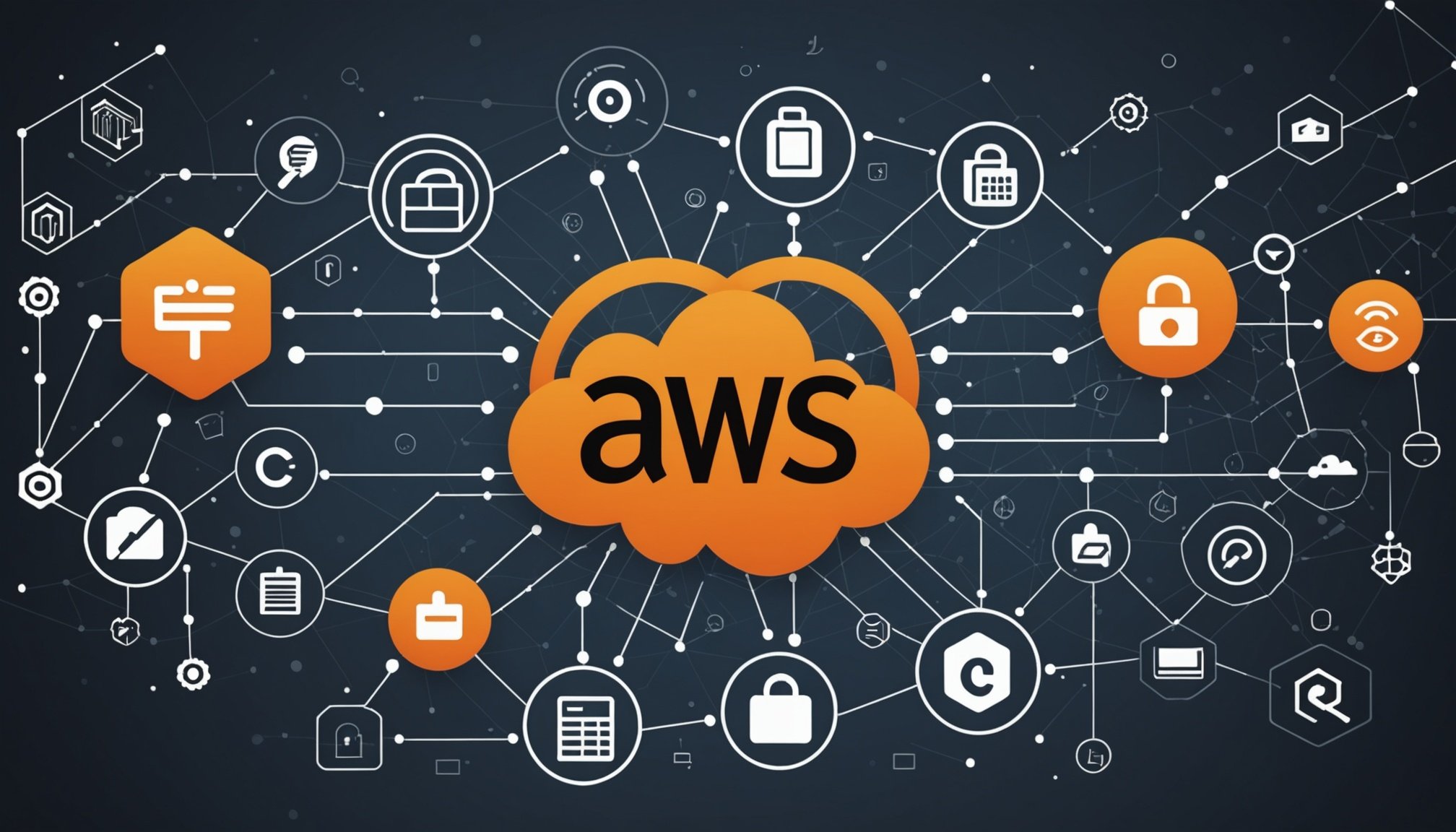Unlock AWS Efficiency: Expert Multi-Account Management with CloudFormation StackSets
Managing multiple AWS accounts can be a complex and daunting task, especially when it comes to ensuring consistency, security, and compliance across your entire AWS infrastructure. However, with the right tools and strategies, you can streamline your operations and enhance your overall efficiency. One of the most powerful tools in your arsenal for achieving this is AWS CloudFormation StackSets.
Understanding CloudFormation StackSets
CloudFormation StackSets are a feature of AWS CloudFormation that allows you to deploy and manage CloudFormation stacks across multiple accounts and AWS regions from a single central administrator account. This capability is crucial for maintaining consistent and scalable infrastructure while ensuring centralized governance.
Also read : Unlock Ultimate Data Resilience with Effortless S3 Bucket Cross-Region Replication Techniques
Key Benefits of CloudFormation StackSets
- Centralized Management: You can manage multiple accounts and regions from a single management account, simplifying the process of deploying and updating resources across your organization[1][5].
- Consistency: Ensure that all your accounts follow the same configuration and compliance standards by using uniform CloudFormation templates.
- Scalability: Easily add new accounts to your organization and automatically include them in your StackSet deployments, making it easier to scale your infrastructure.
- Security: Implement robust security controls by enforcing specific resource configurations and access policies across all accounts.
Setting Up CloudFormation StackSets
To get the most out of CloudFormation StackSets, you need to set them up correctly. Here’s a step-by-step guide on how to do it:
Organizing Your AWS Environment
Organizing your AWS environment using multiple accounts is a best practice. It enhances security, simplifies management, and allows for better resource isolation and cost tracking. Here’s how you can structure your accounts:
Also to discover : Unlocking Automation: Streamline CI/CD with Jenkins Pipeline as Code for Effortless Workflow Mastery
- Management Account: This is the central account used to create your organization and manage the CloudFormation StackSets. It serves as the payer account and is responsible for all charges incurred by the accounts in the organization[4].
- Delegated Administrator Account: This account acts as the centralized management point for your CloudFormation StackSets. It contains the CI/CD pipeline that provisions resources across the organization using CloudFormation StackSets with service-managed permissions[1].
- Member Accounts: Each member account contains an instance of the CloudFormation StackSet and the necessary IAM roles for provisioning resources. These accounts also include CloudFormation Hooks to enforce resource configurations[1].
Configuring CloudFormation Hooks
CloudFormation Hooks are essential for enforcing resource configurations and ensuring compliance. Here’s how you can configure them:
- Register and Configure the Hook: DevSecOps teams register and configure a CloudFormation Hook in each account. This Hook is triggered before provisioning each resource defined in the CloudFormation template[1].
- Validation Process: The Hook loads the relevant resource specification file from an S3 bucket and executes validation rules against the current resource in the template. If the validation checks pass, CloudFormation proceeds with provisioning; otherwise, the process is terminated[1].
Using AWS Organizations with CloudFormation StackSets
AWS Organizations is a service that allows you to centrally manage and govern your AWS environment. Here’s how you can integrate it with CloudFormation StackSets:
Enabling Trusted Access
To deploy CloudFormation StackSets across accounts, you need to enable “Trusted Access” for CloudFormation StackSets in the AWS Organizations service. This setting allows you to push StackSets from the management account to member accounts[3].
Policy-Based Management
AWS Organizations provides a policy framework that allows you to apply policies to groups of accounts or individual accounts. This is particularly useful for enforcing security, compliance, and operational efficiency standards across your organization.
- Organizational Units (OUs): You can organize your accounts into OUs and apply policies at different levels of the hierarchy. This ensures that policies are inherited correctly and that you have fine-grained control over your accounts[4].
- Consolidated Billing: AWS Organizations also allows you to set up a single payment method for all accounts in your organization, providing a combined view of charges and enabling you to take advantage of volume discounts[4].
Scaling with AWS Control Tower
AWS Control Tower is another powerful tool that complements CloudFormation StackSets by providing a pre-configured landing zone for your AWS environment. Here’s how you can use it to scale your multi-account management:
Deploying Controls at Scale
AWS Control Tower allows you to deploy and manage controls at scale across your entire AWS organization. These controls are categorized based on their behavior and guidance, helping you address the customer part of the AWS Shared Responsibility Model[2].
Provisioning Access
Control Tower simplifies the process of provisioning access to security and audit teams in a multi-account environment. It offers built-in preventive, proactive, and detective controls that help ensure your environment is secure, compliant, and operationally efficient[2].
Best Practices for Multi-Account Management
To get the most out of CloudFormation StackSets and AWS Organizations, here are some best practices to follow:
Isolate RCFGE Management
Isolating the operation and management of your Resource Configuration and Governance Engine (RCFGE) solution in a dedicated account is crucial for security. This ensures that the resources related to RCFGE are managed separately and securely[1].
Use Service-Managed Permissions
Using service-managed permissions with CloudFormation StackSets ensures that the necessary permissions are automatically managed by AWS, reducing the administrative overhead and enhancing security[1].
Implement Attribute-Based Access Control (ABAC)
Using tags to implement ABAC allows you to define permissions based on attributes attached to users and AWS resources. This enhances the granularity of your access control and makes it easier to manage complex permissions[4].
Practical Insights and Actionable Advice
Here are some practical tips to help you implement CloudFormation StackSets effectively:
Example Configuration
Here is an example of how you might configure a CloudFormation Hook to enforce resource configurations:
- DevOps specifies a CloudFormation template that defines the required resources and configurations.
- CloudFormation creates a new stack resource, starting the provisioning process based on the template.
- The Hook is triggered before provisioning for each resource that’s defined in the template.
- The Hook loads the relevant resource specification file from the S3 bucket and executes the validation rules against the current resource in the CloudFormation template.
Table: Comparing AWS Control Tower and CloudFormation StackSets
| Feature | AWS Control Tower | CloudFormation StackSets |
|---|---|---|
| Deployment Scope | Deploys controls across the entire AWS organization | Deploys CloudFormation stacks across multiple accounts and regions |
| Control Types | Preventive, proactive, and detective controls | Enforces resource configurations and compliance standards |
| Access Management | Simplifies provisioning access to security and audit teams | Uses IAM roles and service-managed permissions for access control |
| Scalability | Scales controls across the organization | Scales CloudFormation stacks across multiple accounts and regions |
| Integration | Integrates with AWS Organizations for policy-based management | Integrates with AWS Organizations for centralized governance |
Quotes from Experts
- “AWS CloudFormation StackSets provide a powerful way to deploy and manage infrastructure across multiple accounts and regions, ensuring consistency and scalability while maintaining centralized governance.” – AWS Security Blog[1].
- “AWS Control Tower is the easiest way to set up and govern a secure, compliant, and multi-account AWS environment based on best practices established by working with thousands of enterprises.” – AWS Cloud Operations Blog[2].
Managing multiple AWS accounts efficiently is crucial for any organization looking to leverage the full potential of the cloud. By using CloudFormation StackSets, AWS Organizations, and AWS Control Tower, you can ensure consistent, secure, and compliant infrastructure across your entire AWS environment.
Key Takeaways
- Centralized Governance: Use CloudFormation StackSets to deploy and manage resources across multiple accounts and regions from a single central administrator account.
- Policy-Based Management: Leverage AWS Organizations to apply policies at different levels of your account hierarchy, ensuring compliance and operational efficiency.
- Scalable Controls: Deploy and manage controls at scale using AWS Control Tower, ensuring your environment is secure and compliant.
- Best Practices: Isolate RCFGE management, use service-managed permissions, and implement ABAC to enhance security and manageability.
By following these best practices and leveraging the powerful features of CloudFormation StackSets, AWS Organizations, and AWS Control Tower, you can unlock the full efficiency of your AWS infrastructure and ensure a secure, compliant, and scalable cloud environment.











